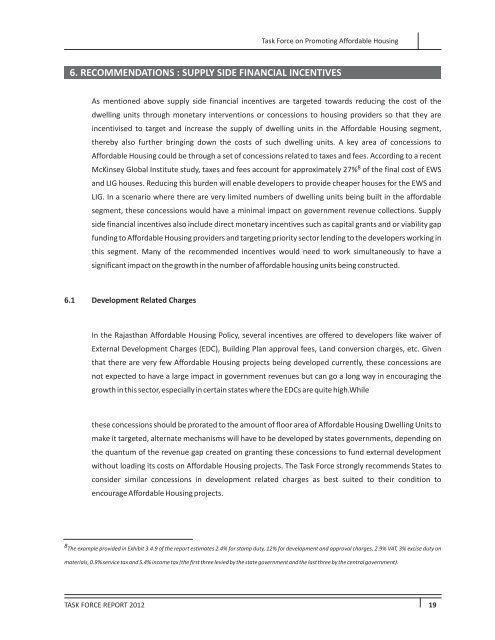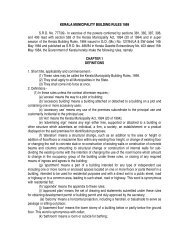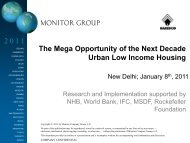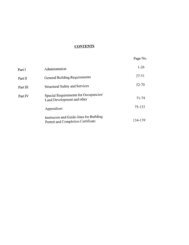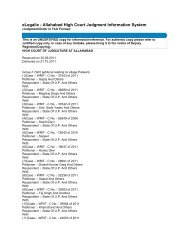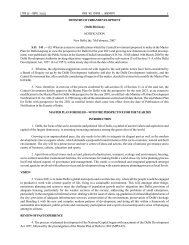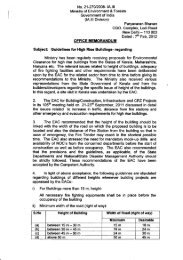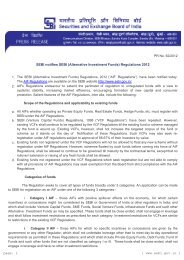Task force on Promoting Affordable Housing - Naredco
Task force on Promoting Affordable Housing - Naredco
Task force on Promoting Affordable Housing - Naredco
You also want an ePaper? Increase the reach of your titles
YUMPU automatically turns print PDFs into web optimized ePapers that Google loves.
<str<strong>on</strong>g>Task</str<strong>on</strong>g> Force <strong>on</strong> <strong>Promoting</strong> <strong>Affordable</strong> <strong>Housing</strong><br />
6. RECOMMENDATIONS : SUPPLY SIDE FINANCIAL INCENTIVES<br />
As menti<strong>on</strong>ed above supply side financial incentives are targeted towards reducing the cost of the<br />
dwelling units through m<strong>on</strong>etary interventi<strong>on</strong>s or c<strong>on</strong>cessi<strong>on</strong>s to housing providers so that they are<br />
incentivised to target and increase the supply of dwelling units in the <strong>Affordable</strong> <strong>Housing</strong> segment,<br />
thereby also further bringing down the costs of such dwelling units. A key area of c<strong>on</strong>cessi<strong>on</strong>s to<br />
<strong>Affordable</strong> <strong>Housing</strong> could be through a set of c<strong>on</strong>cessi<strong>on</strong>s related to taxes and fees. According to a recent<br />
McKinsey Global Institute study, taxes and fees account for approximately 27%<br />
8<br />
of the final cost of EWS<br />
and LIG houses. Reducing this burden will enable developers to provide cheaper houses for the EWS and<br />
LIG. In a scenario where there are very limited numbers of dwelling units being built in the affordable<br />
segment, these c<strong>on</strong>cessi<strong>on</strong>s would have a minimal impact <strong>on</strong> government revenue collecti<strong>on</strong>s. Supply<br />
side financial incentives also include direct m<strong>on</strong>etary incentives such as capital grants and or viability gap<br />
funding to <strong>Affordable</strong> <strong>Housing</strong> providers and targeting priority sector lending to the developers working in<br />
this segment. Many of the recommended incentives would need to work simultaneously to have a<br />
significant impact <strong>on</strong> the growth in the number of affordable housing units being c<strong>on</strong>structed.<br />
6.1 Development Related Charges<br />
In the Rajasthan <strong>Affordable</strong> <strong>Housing</strong> Policy, several incentives are offered to developers like waiver of<br />
External Development Charges (EDC), Building Plan approval fees, Land c<strong>on</strong>versi<strong>on</strong> charges, etc. Given<br />
that there are very few <strong>Affordable</strong> <strong>Housing</strong> projects being developed currently, these c<strong>on</strong>cessi<strong>on</strong>s are<br />
not expected to have a large impact in government revenues but can go a l<strong>on</strong>g way in encouraging the<br />
growth in this sector, especially in certain states where the EDCs are quite high.While<br />
these c<strong>on</strong>cessi<strong>on</strong>s should be prorated to the amount of floor area of <strong>Affordable</strong> <strong>Housing</strong> Dwelling Units to<br />
make it targeted, alternate mechanisms will have to be developed by states governments, depending <strong>on</strong><br />
the quantum of the revenue gap created <strong>on</strong> granting these c<strong>on</strong>cessi<strong>on</strong>s to fund external development<br />
without loading its costs <strong>on</strong> <strong>Affordable</strong> <strong>Housing</strong> projects. The <str<strong>on</strong>g>Task</str<strong>on</strong>g> Force str<strong>on</strong>gly recommends States to<br />
c<strong>on</strong>sider similar c<strong>on</strong>cessi<strong>on</strong>s in development related charges as best suited to their c<strong>on</strong>diti<strong>on</strong> to<br />
encourage <strong>Affordable</strong> <strong>Housing</strong> projects.<br />
8 The example provided in Exhibit 3.4.9 of the report estimates 2.4% for stamp duty, 12% for development and approval charges, 2.9% VAT, 3% excise duty <strong>on</strong><br />
materials, 0.9% service tax and 5.4% income tax (the first three levied by the state government and the last three by the central government).<br />
TASK FORCE REPORT 2012<br />
19


